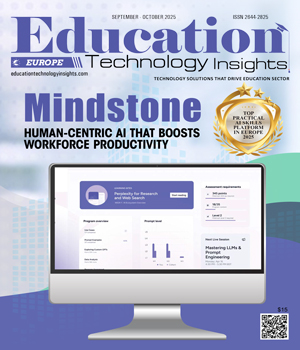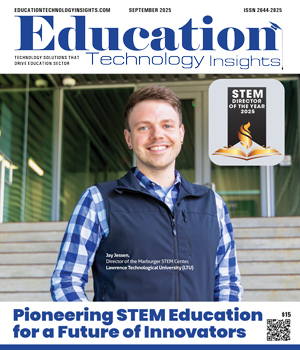THANK YOU FOR SUBSCRIBING
Be first to read the latest tech news, Industry Leader's Insights, and CIO interviews of medium and large enterprises exclusively from Education Technology Insights
Advancing a Culture of Innovation requires an Institutional Growth-Mindset
William Knapp, Executive Director, Distance Learning & Instructional Technologies, Grand Rapids Community College
 William Knapp, Executive Director, Distance Learning & Instructional Technologies, Grand Rapids Community College
William Knapp, Executive Director, Distance Learning & Instructional Technologies, Grand Rapids Community CollegeThe landscape of higher education is changing. Whether we are able to adjust to these changes or not may have everything to do with our institutional mindset. Each year EDUCAUSE publishes the Horizon Report on Higher Education. Among the key trends in this year’s report includes Advancing Cultures of Innovation.
It can be challenging to advance change from within an established organizational culture. Oftentimes innovative ideas or proposals are met with “that’s not how we do things” or “that’s just not the culture here”. Ironically, the etymology of the word “culture” is synonymous with the word “to cultivate” - to prepare for growth. Institutions of higher education, in order to remain relevant in this changing landscape, need to prepare for growth by adopting an institutional growth-mindset.
Carol Dwerk, author of Mindset: The new psychology of success, says a “growth-mindset” differs from a “fixed mindset” in that the fixed mindset is grounded in the belief that certain characteristics are carved in stone, whereas the growth mindset in the belief that these same qualities can be cultivated through our own efforts and with the help of others. According to Dwerk, both individuals as well as organizations reflect one or the other of these mindsets. Employees of organizations with a growth-mindset say their employers support risk-taking, innovation, and creativity. Supervisors of growth-mindset organizations describe their employees as more collaborative, committed to learning, and innovative.
Collaboration is more than simply bringing a group of people together around a common issue or topic. Collaboration implies working toward a common goal. Most institutional strategic plans have identified goals and strategies in somewhat general terms. These strategies can serve as an incubator for innovation.
"Every innovation is an iterative process. Data will inform the next iteration and continuous design improvements"
Inclusivity is essential. Too often, one division or department will attempt to get buy-in only after they have defined an initiative. This approach is bound to face opposition. Inviting a broad representation of faculty, staff, and students to the table at the onset will foster a sense of ownership and community around the initiative.
Once the initiative has been defined in more specific terms, a review of the research literature can help to guide the development of a plan of action. This has the advantage of bringing in outside voices. By exploring new ideas and approaches and creating dialog around evidence-based research we assist stakeholders in challenging old assumptions and practices and instead begin to advance a growth-mindset.
Institutions wishing to advance a culture of innovation recognize that innovation is not without some degree of risk. As part of the research process, it can be helpful to benchmark with other institutions that have initiated similar efforts. Connecting with project leaders from these colleges to ask about challenges can help to anticipate outcomes and understand the risks.
Every innovation is an iterative process. Data will inform the next iteration and continuous design improvements. It is this iterative process that defines our institutional growth-mindset and prepares us for the ever-changing landscape of academic technologies in higher education.
Read Also
Designing Learning that Transforms and Fosters Change
Stop Chasing Interesting. Start Choosing Impact.
Leading with Purpose to Strengthen Campus Belonging
Achieving Educational Excellence through Meaningful Engagements
Beyond Administration: How a School Management System Transforms Learning Communities
Empowering Educators through Purposeful, Connected and Transformative Learning

I agree We use cookies on this website to enhance your user experience. By clicking any link on this page you are giving your consent for us to set cookies. More info






















